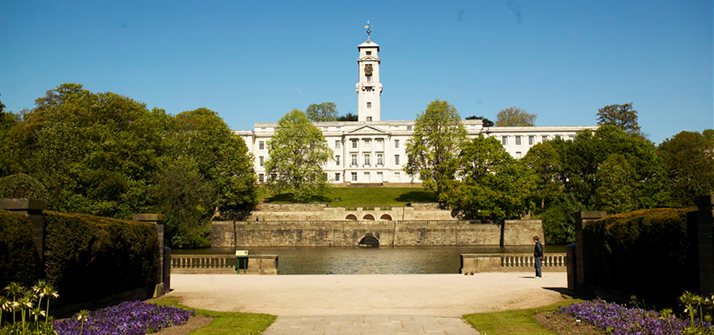June 23, 2021, by Dr. Meghan Gray
Open Days 2021: Teaching physics in the time of COVID (and beyond)

Our Open Days for prospective undergraduate students look a little different this year. Normally the whole university would be gearing up to welcome crowds of thousands on to campus for two days in July, with an multitude of student ambassadors showing off our beautiful campus. (Sunny weather and ice cream by the lake a definite bonus.)
In the School of Physics and Astronomy each year we regularly pull out all the stops to put on two full days of talks, demonstrations, and tours. Our priority has always been to give applicants and their families the chance to chat with members of our School and to picture what it is like to be part of our physics community. At the early stage of picking a university (and maybe even a subject) to study, it really helps to get a feel for the place and culture of the department at which you might spend some of the formative years of your life.
But in the time of COVID and social distancing restrictions keeping us apart, how do we replicate that experience? Well, as we have all year – with innovation and creativity and harnessing the various digital tools at our disposal.
First of all are our Virtual Open Day talks, with two more to follow next week (Physics – June 28; Mathematical Physics – June 29). We also have taster lectures on available on-demand to showcase some of the exciting research that goes on into artificial intelligence and nanoscience or simulations of black holes in the lab. And for three Saturdays in June and July staff and students will be available to chat in person with visitors who have registered for our outdoor campus visits.
But to add to those events, we’ve put together a series of taster videos showing some of the wide range of teaching and learning experiences on offer in the School of Physics and Astronomy.
A taste of physics teaching at the University of Nottingham
First off – a very memorable lecture on phase transitions in the Dr. Yong Mao’s 2019 Thermal & Statistical Physics course, filmed by student Subin Saji. Second year lab technician Paul Munday shows how demonstrations cooked up by our technical staff can really make the content come alive. (On a personal note, hearing the laughter of a full lecture theatre full of engaged students is one of the things I’m most looking forward to experiencing again when restrictions allow).
But even during the 2020-2021 academic year we still managed to make online learning interactive and enjoyable when it was not possible to meet together in the classroom. Case in point: the live weekly synchronous sessions for first year Mathematics for Physics and Astronomy with Dr Simon Dye. Can you beat his 60s maths challenge?
Many students have given us feedback that there are some elements of digital learning that they’d like to see continue. For example, the ability to get to grips with some of the more challenging material at their own pace by pausing and rewatching recorded material. Here’s a taste of some Special Relativity in the first year core module “From Newton to Einstein” delivered by Dr. Richard Hill and Dr. Phil Hawker during COVID restrictions.
Of course, an education in physics involves practical training, and our lab teaching staff took heroic measures to keep in-person experimental modules going in a COVID-safe manner when we were not in full national lockdown restrictions. Here’s Dr Paul Glover and Paul Munday demonstrating some of the equipment students encounter in the lab:
Finally, the research seminars that make up part of our first year physics course “Frontiers in Physics” gives everyone in the School a chance to engage directly with those conducting cutting-edge research in physics. This year, we held live streaming lectures by guest speakers such as Prof Ed Copeland on “The State of Our Universe” and Dr. Niall Holmes on “Quantum Sensing the Brain”. The physics chat between staff and students spilled over into lively post-seminar MSTeams sessions (though no replacement for our usual mingling in the foyer over refreshments).
Of course in addition, our students learn by doing in interactive workshops, tutorials, and project supervision that keep going whether in person or online. How exactly we retain some of the lessons learned about digital engagement from this challenging period is still very much up for debate. But we look forward to continue to engage with our students, support their learning, and provide them with opportunities to not just learn about physics but to actually be involved in the exciting research that happens in our School.
So for those who are considering studying physics at university: we look forward to meeting you if you’re able to visit us on campus or attend our virtual events. You can always find out more by reading this blog, subscribing to our YouTube channel, following us on social media, or watching our popular Sixty Symbols and Deep Sky Videos channels.
If you have any questions, feel free to contact the admissions team by sending us an email or chatting with us on Unibuddy. We’re here to help.
Many thanks to my colleague Dr. Tasos Avgoustidis for compiling these teaching highlights and to PhD students Natalie Rhodes and Matt Edmondson for video editing.
No comments yet, fill out a comment to be the first

Leave a Reply